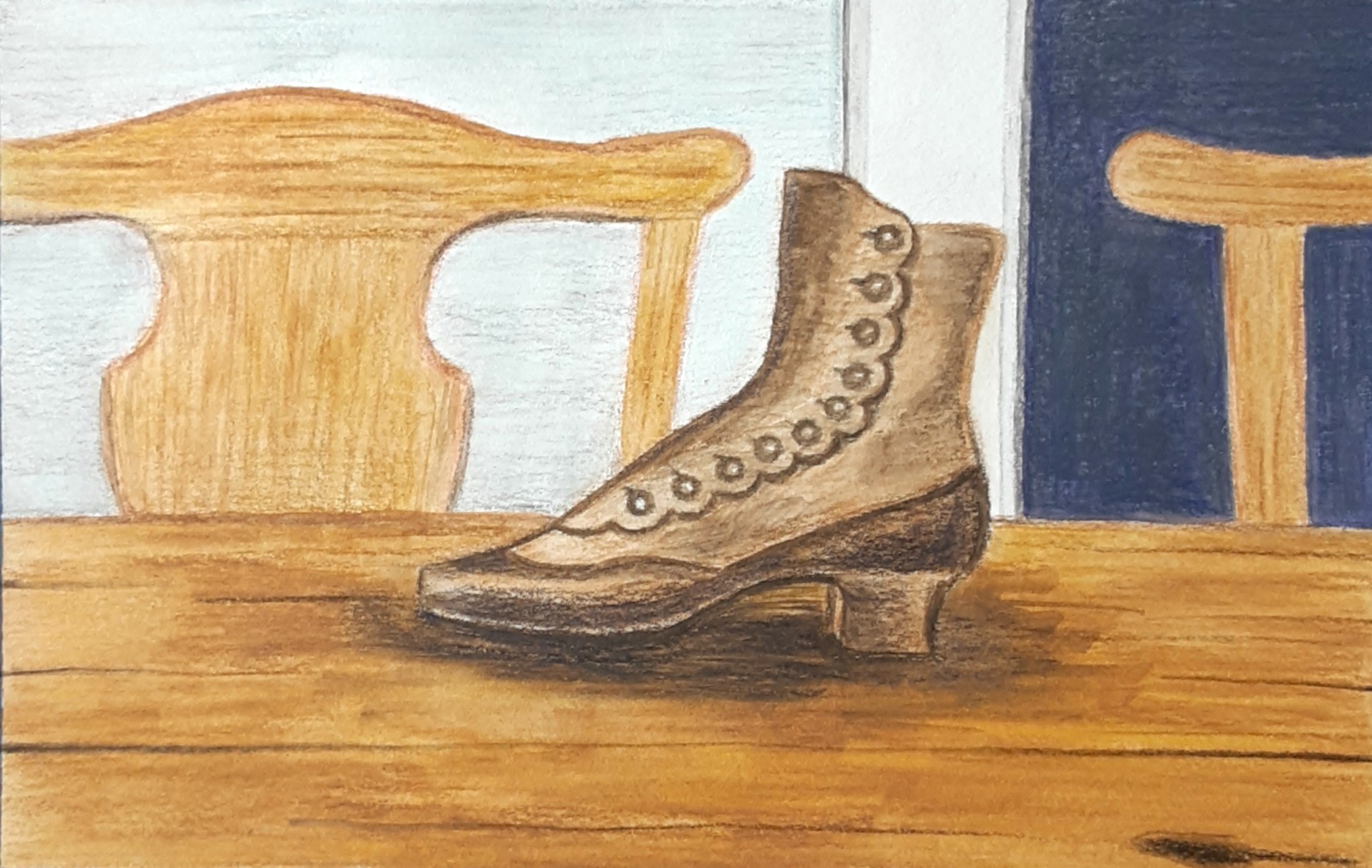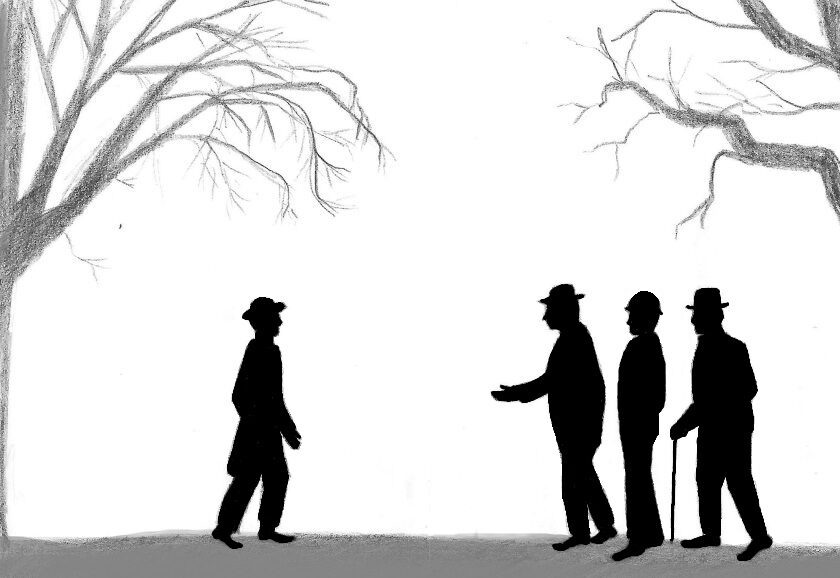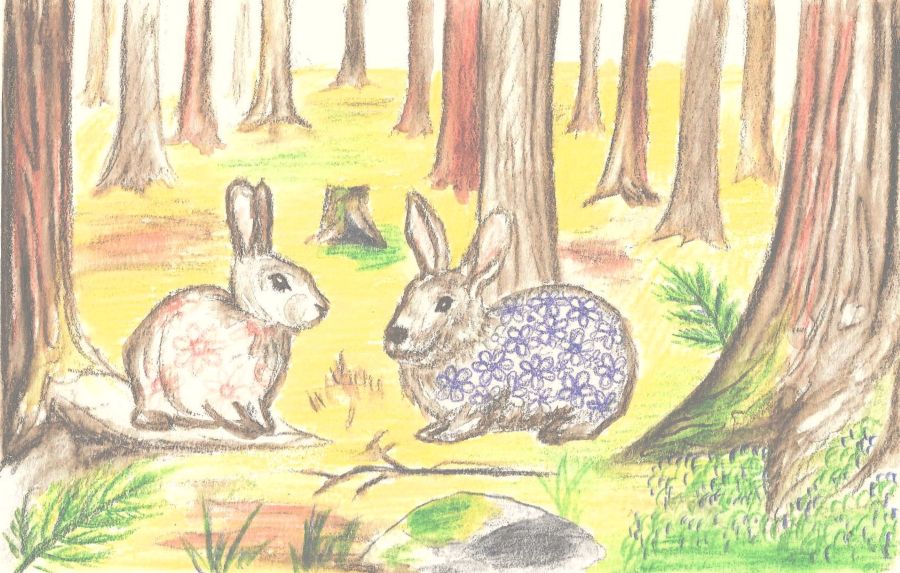Under the Greenwood Tree begins in the shadowy night, and immediately the darkness creatively shapes the description of the world. Far from an ominous beginning, here a dark cold night provides opportunities for humor and creates a sense of deep connection between the emerging characters and their landscape.
The narration in this opening description takes turns between speaking from the insider’s perspective of the locals, and being constrained by the perspective of the reader, a stranger, who happens upon the half-lit scene. The first paragraph of the novel illuminates the difference between these perspectives:
To dwellers in a wood, almost every species of tree has its voice as well as its feature. At the passing of the breeze the fir-trees sob and moan no less distinctly than they rock: the holly whistles as it battles with itself: the ash hisses amid its quivering: the beech rustles while its flat boughs rise and fall. And winter, which modifies the note of such trees as shed their leaves, does not destroy its individuality.
We are being introduced to the characters’ world not as we would see it, but as they see it, with their particular knowledge. They can discern more of the trees in the dark than a stranger could in the light of day. However, though the narrator sometimes gifts us with this additional insight, he also makes the successive descriptions playful by revoking that insight and describing the visual scene in a literal way, like one looking upon a dimly lit stage.
Dick Dewey is the first character we meet as he strolls along the lane, singing to himself. Though he is not illuminated, his character comes through to the discerning ear: “All the evidences of his nature were those afforded by the spirit of his footsteps.” With no description of inner thought or facial expression, we immediately understand the essence of the whistling, jovial youth. We also get to see the scene briefly through Dick’s understanding: “To his eyes, casually glancing upward, the silver and black-stemmed birches, with their characteristic tufts, the pale grey boughs of beech, the dark-creviced elm all appeared now as black and flat outlines upon the sky”. Although the trees do appear in the moment as black forms to him, his familiarity with them allows for a double layer of vision: he can overlay their daytime appearance and characteristics just fine, and so he is not any more lost in the darkened wood than in a daylit one.
As the trees can be told apart by their singing, so is Dick’s voice identified by his neighbor Michael Mail as he approaches along with a few others. Dick knows who they are, but to the reader they are described as simplified versions of themselves, hard to make out in the dark: “They too had lost their rotundity with the daylight, and advanced against the sky in flat outlines, which suggested some processional design on Greek or Etruscan pottery”. This follows a similar picture-related description of Dick:
“Having come more into the open he could now be seen rising against the sky, his profile appearing on the light background like the portrait of a gentleman in black cardboard. It assumed the form of a low-crowned hat, an ordinary-shaped nose, an ordinary chin, an ordinary neck and ordinary shoulders. What he consisted of further down was invisible for lack of sky low enough to picture him on.”
The narrator continues this game with the other characters, giving names, descriptions of silhouettes, postures, and gaits, and then shrugs with upturned hands when the reader asks for the completed picture of their character, citing the impenetrable darkness as an impediment.
Perhaps even more imaginative though is the description of an absent character, whose only outline to go on is the contours of a single boot. When the characters from the opening scene are gathered around a table enjoying cider, Mr. Penny the shoemaker pulls out a boot that he had been repairing. He is talking about how, after years in his profession, he can identify a person solely based on their foot. He can read, in the repairs and patches he has made, stories of the person’s life and trials. And the other characters, usually blind to such things, for a moment read with him into the details of the boot he presents, which belongs to the new schoolmistress Fancy Day.
There, between the cider-mug and the candle stood this interesting receptacle of the little unknown’s foot–and a very pretty boot it was. A character in fact–the flexible bend at the instep, the rounded localities of the small nestling toes–scratches from careless scampers now long forgotten–all, as repeated in the tell-tale leather, evincing a nature and a bias. Dick surveyed it with a delicate feeling that he had no right to do so without having first asked the owner of the foot’s position.
Much in the same way that we were introduced to Dick by his footsteps, here a rich character forms in the imagination of one glimpsing the smallest detail of a life. Before he sees her face, Dick is in love with Fancy. Or to be specific, the idea of her. But lest we too get carried away by our imaginations, conjuring a person from a footprint or a shadow, Dick’s father’s declaration gives us back a humbler perspective:
“Talk of knowing people by their feet!” said Reuben. ‘Rot me, my sonnies, then, if I can tell what a man is from all his members put together, oftentimes.”



